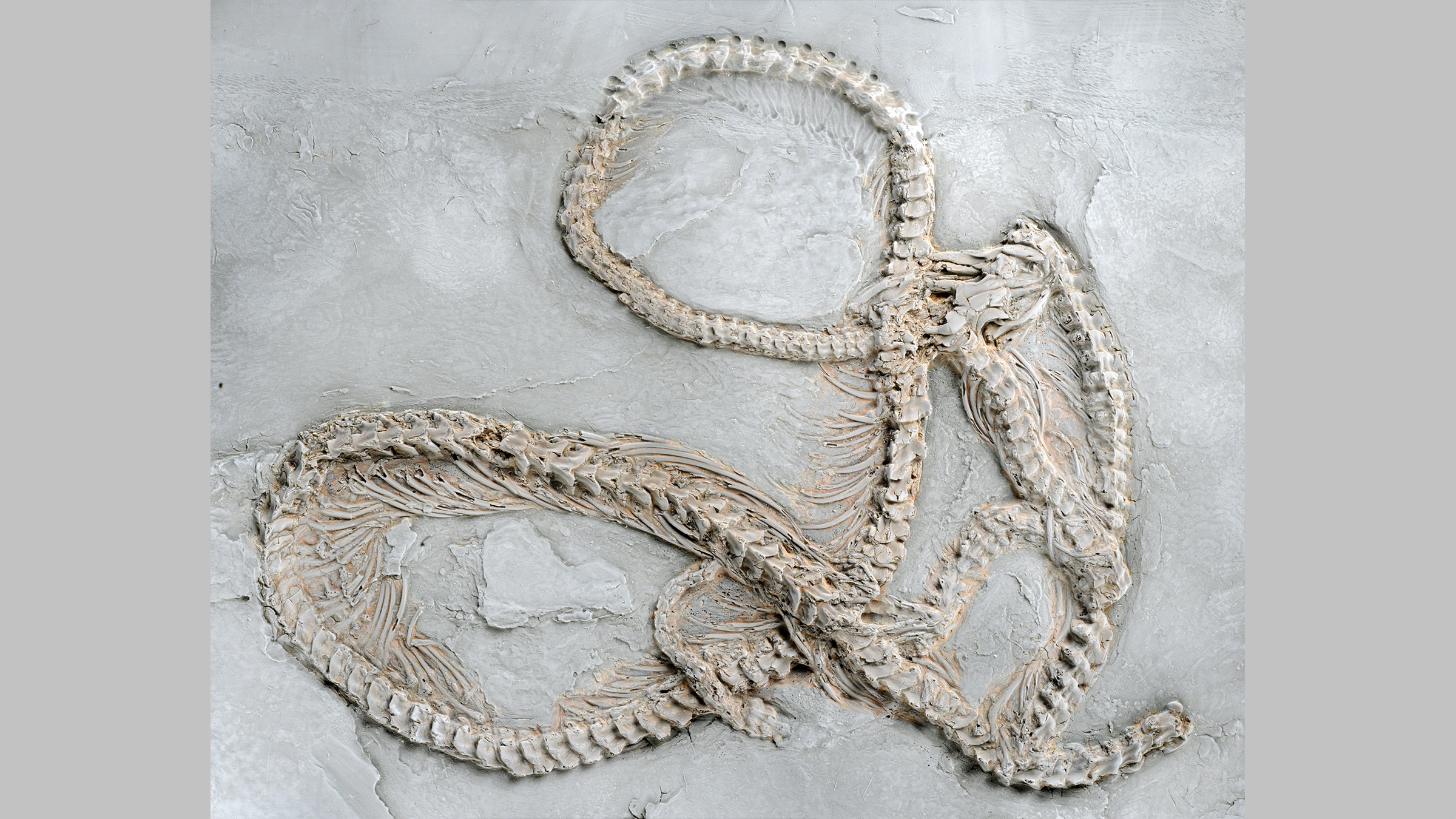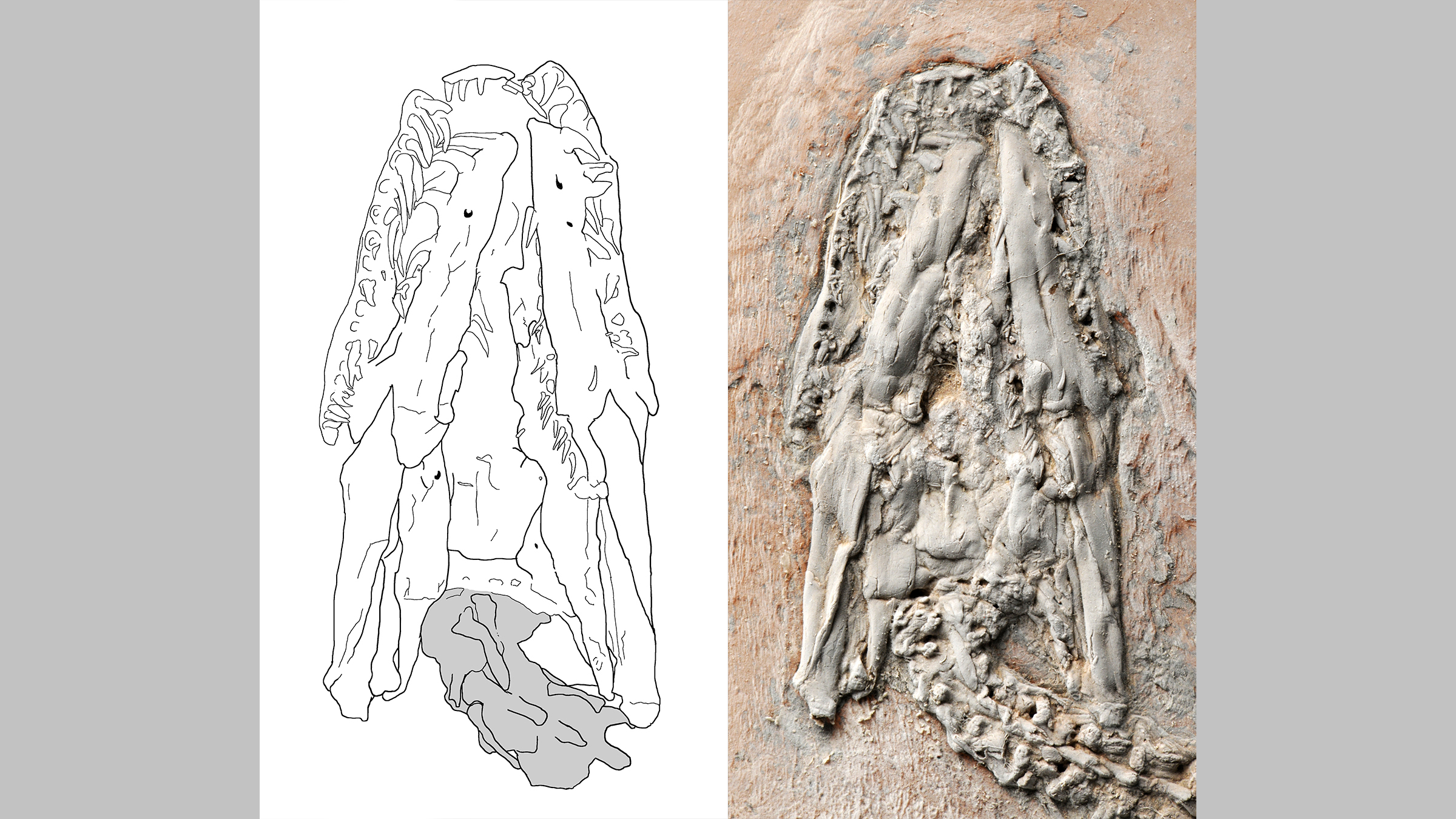World's oldest python fossil unearthed
The python fossils indicate these snakes evolved in Europe.

Scientists have discovered fossils of the oldest python on record, a slithery beast that lived 48 million years ago in what is now Germany.
Found near an ancient lake, the snake remains are helping researchers learn where pythons originated. Previously, it wasn't clear whether pythons came from continents in the Southern Hemisphere, where they live today, or the Northern Hemisphere, where their closest living relatives (the sunbeam snakes of Southeast Asia and the Mexican burrowing python) are found. But this newfound species — dubbed Messelopython freyi — suggests that pythons evolved in Europe.
"So far, there have been no early fossils that would help decide between a Northern and Southern Hemisphere origin," study co-researcher Krister Smith, vertebrate paleontologist at the Senckenberg Research Institute in Frankfurt, Germany, told Live Science in an email. "Our new fossils are by far the oldest records of pythons, and (being in Europe) they support an origin in the Northern Hemisphere."
Related: Image gallery: Snakes of the world
The M. freyi fossils were found at Messel Fossil Pit, near Frankfurt, Germany. Formerly an oil shale mine, this site almost became a garbage dump in the 1970s. ("A big hole in the ground is a valuable commodity," Smith said.) But by then, the site was already known for its remarkable fossils dating to the Eocene epoch (between 57 million and 36 million years ago). So, in 1995 it became a UNESCO (United Nations Educational, Scientific and Cultural Organization) site. Fossils unearthed there include a pregnant mare, mating turtles and shimmering beetles.


M. freyi would have been about the same size as today's small pythons, reaching nearly 3.2 feet (1 meter) in length and sporting about 275 vertebrae, the researchers said. The ancient python also sheds light on its relationship with boa constrictors.
In effect, the discovery shows that this early European python lived alongside boa constrictors, a startling find given that boas don't live anywhere near modern-day pythons. In general, boas live in South and Central America, Madagascar and northern Oceania, whereas pythons inhabit Africa, Southeast Asia and Australia. "This is one of the most exciting and intriguing aspects of the discovery of Messelopython," said study co-researcher Hussam Zaher, professor and curator of vertebrates at the Museum of Zoology at the University of São Paulo, in Brazil.
Sign up for the Live Science daily newsletter now
Get the world’s most fascinating discoveries delivered straight to your inbox.
Researchers already knew that boas lived in Europe during the early Paleogene period, which lasted from 66 million to 23 million years ago. Now that it's clear pythons lived there too, it raises questions about how these "direct ecological competitors," which both squeeze prey to death, coexisted, Zaher told Live Science in an email.
This question may be answered by finding more early python and boa fossils, especially those with preserved stomach contents, he said. In addition, researchers can look to southern Florida, where python (Python molurus bivittatus and P. sebae) and boa (Boa constrictor) species coexist as invasive species. It's not yet clear whether the P. molurus bivittatus and B. constrictor living in the Sunshine State "are competing over resources or may be using slightly different microhabitat and preys," Zaher said. "A similar situation may have happened in Europe during the Eocene."
The study was published online Wednesday (Dec. 16) in the journal Biology Letters.
Originally published on Live Science.

Laura is the archaeology and Life's Little Mysteries editor at Live Science. She also reports on general science, including paleontology. Her work has appeared in The New York Times, Scholastic, Popular Science and Spectrum, a site on autism research. She has won multiple awards from the Society of Professional Journalists and the Washington Newspaper Publishers Association for her reporting at a weekly newspaper near Seattle. Laura holds a bachelor's degree in English literature and psychology from Washington University in St. Louis and a master's degree in science writing from NYU.










